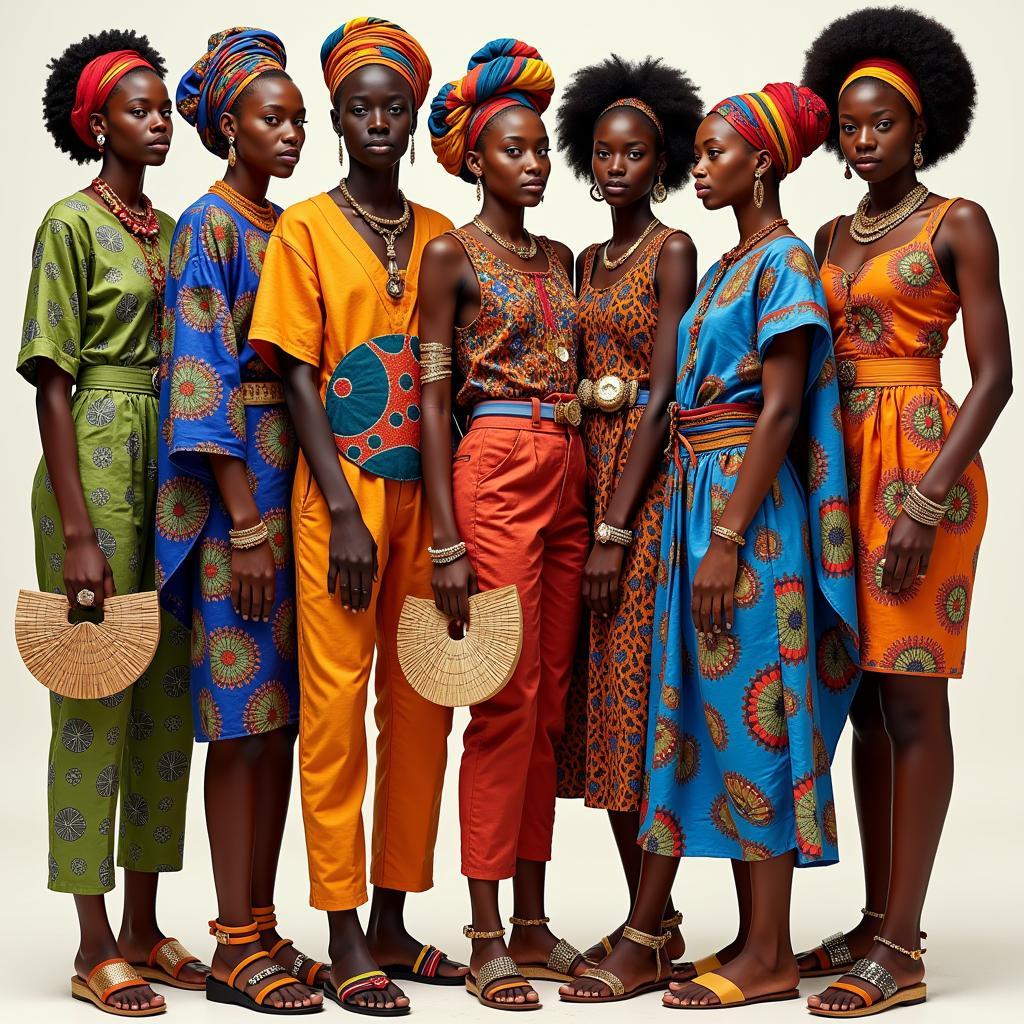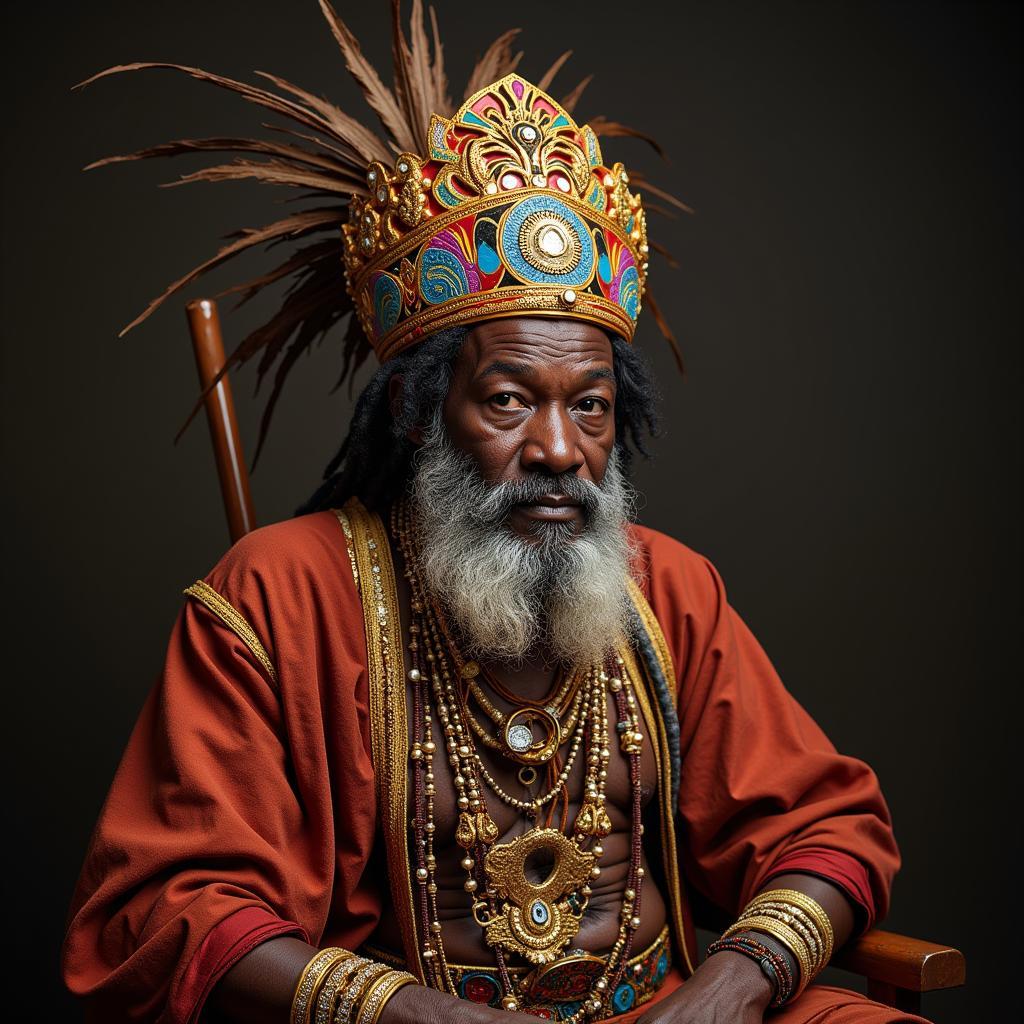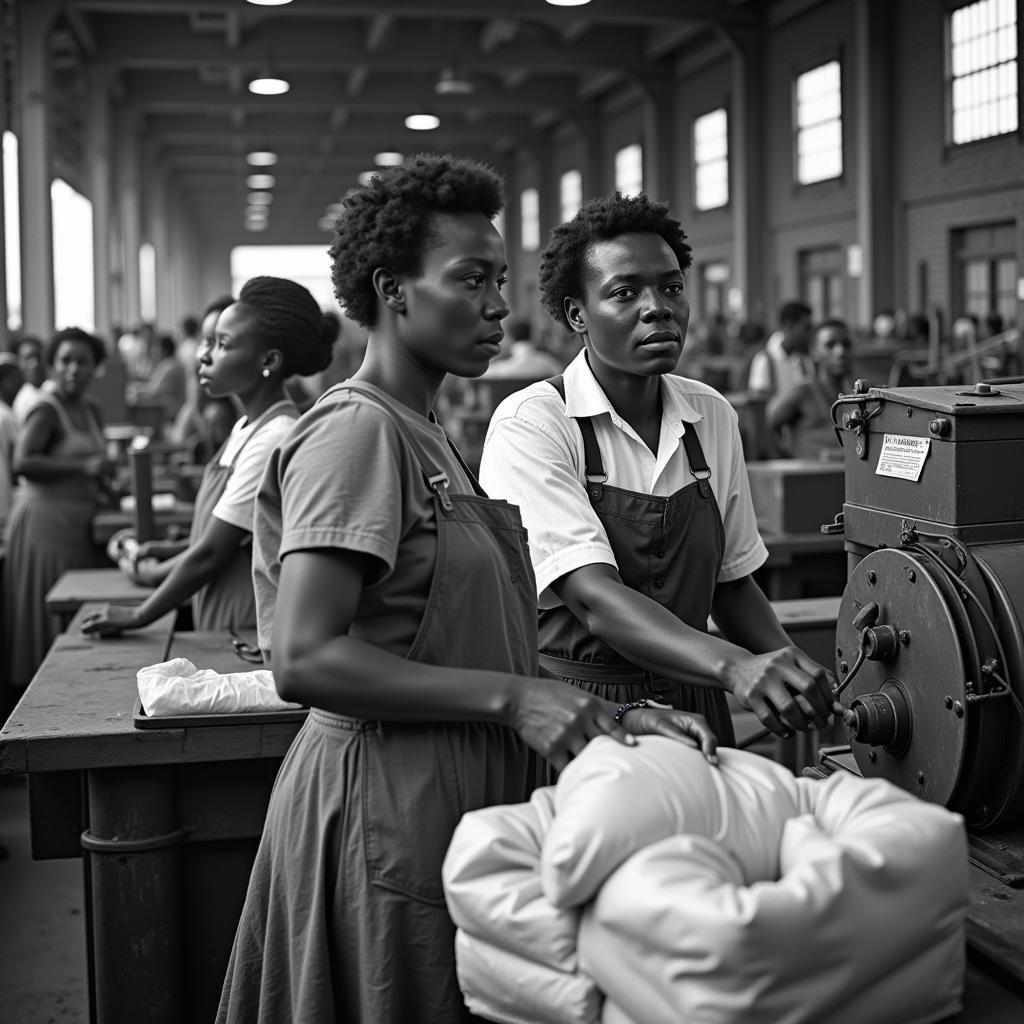African Traditional Attire: A Colorful Tapestry of Culture and Heritage
African Traditional Attire is a vibrant expression of the continent’s rich cultural heritage and diverse history. From the flowing robes of the Sahara to the intricate beadwork of the Maasai, each garment tells a story of tradition, identity, and social significance. This article delves into the fascinating world of African clothing, exploring its diverse forms, meanings, and enduring appeal in a globalized world.
 African Traditional Attire Diversity
African Traditional Attire Diversity
A Continent of Diversity: Styles and Influences
Africa is not a monolithic entity; it is a tapestry woven from the threads of over 50 distinct nations, each with its unique cultural practices and expressions. This diversity is beautifully reflected in the continent’s traditional clothing, which varies widely in style, materials, and symbolism.
Regional Variations: A Glimpse into Different Worlds
From North Africa’s flowing djellabas and kaftans, often adorned with intricate embroidery, to West Africa’s brightly colored boubous and grand boubou, known for their voluminous silhouettes, each region boasts distinctive styles that reflect its unique environmental, historical, and social context. In East Africa, the Maasai are renowned for their striking red shukas and intricate beadwork, while Southern Africa is home to the iconic Basotho blankets and the Ndebele people’s vibrant geometric patterns.
 Maasai People in Traditional Attire
Maasai People in Traditional Attire
The Role of Textiles and Adornments
Textiles play a pivotal role in African traditional attire. Locally woven fabrics, often hand-dyed with natural pigments, create stunning visual displays. For example, the vibrant indigo-dyed fabrics of the Yoruba people in Nigeria are renowned for their intricate patterns and cultural significance. Adornments like beads, cowrie shells, and feathers add layers of meaning and visual appeal to the garments.
Beyond Fashion: The Deeper Significance
African traditional attire is much more than just clothing; it’s a powerful form of nonverbal communication, conveying deep-seated cultural values and social structures.
Status and Identity: Clothes as Social Markers
Clothing often serves as a visual indicator of social standing, marital status, and age. Elaborate headdresses, for instance, might signify the authority of a tribal leader, while specific colors or patterns could denote a person’s clan or lineage.
 African Chief in Traditional Attire
African Chief in Traditional Attire
Rituals and Ceremonies: Dressing for the Occasion
Traditional attire plays a crucial role in various rituals and ceremonies, from births and weddings to funerals and harvest festivals. Special garments, often imbued with symbolic meanings and ancestral connections, are worn to mark these significant life events.
African Traditional Attire in the Modern World
Despite the influx of Western fashion trends, African traditional attire has retained its relevance and continues to evolve in exciting ways.
A Renaissance of Heritage: Embracing Tradition
There’s a growing movement among young Africans to reconnect with their cultural roots, leading to a resurgence of interest in traditional clothing. Contemporary African designers are reimagining traditional styles, incorporating modern cuts, fabrics, and embellishments, creating a vibrant fusion of old and new.
Global Inspiration: African Prints on the International Runway
African prints, with their bold colors and geometric patterns, have gained global recognition and inspired countless fashion designers worldwide. From high-end fashion houses to streetwear brands, African-inspired designs have graced runways and streets across the globe.
Conclusion: A Legacy of Beauty and Meaning
African traditional attire is a testament to the continent’s rich cultural tapestry, reflecting its history, values, and artistic ingenuity. As we move towards an increasingly interconnected world, appreciating and celebrating these diverse forms of cultural expression becomes ever more important.

